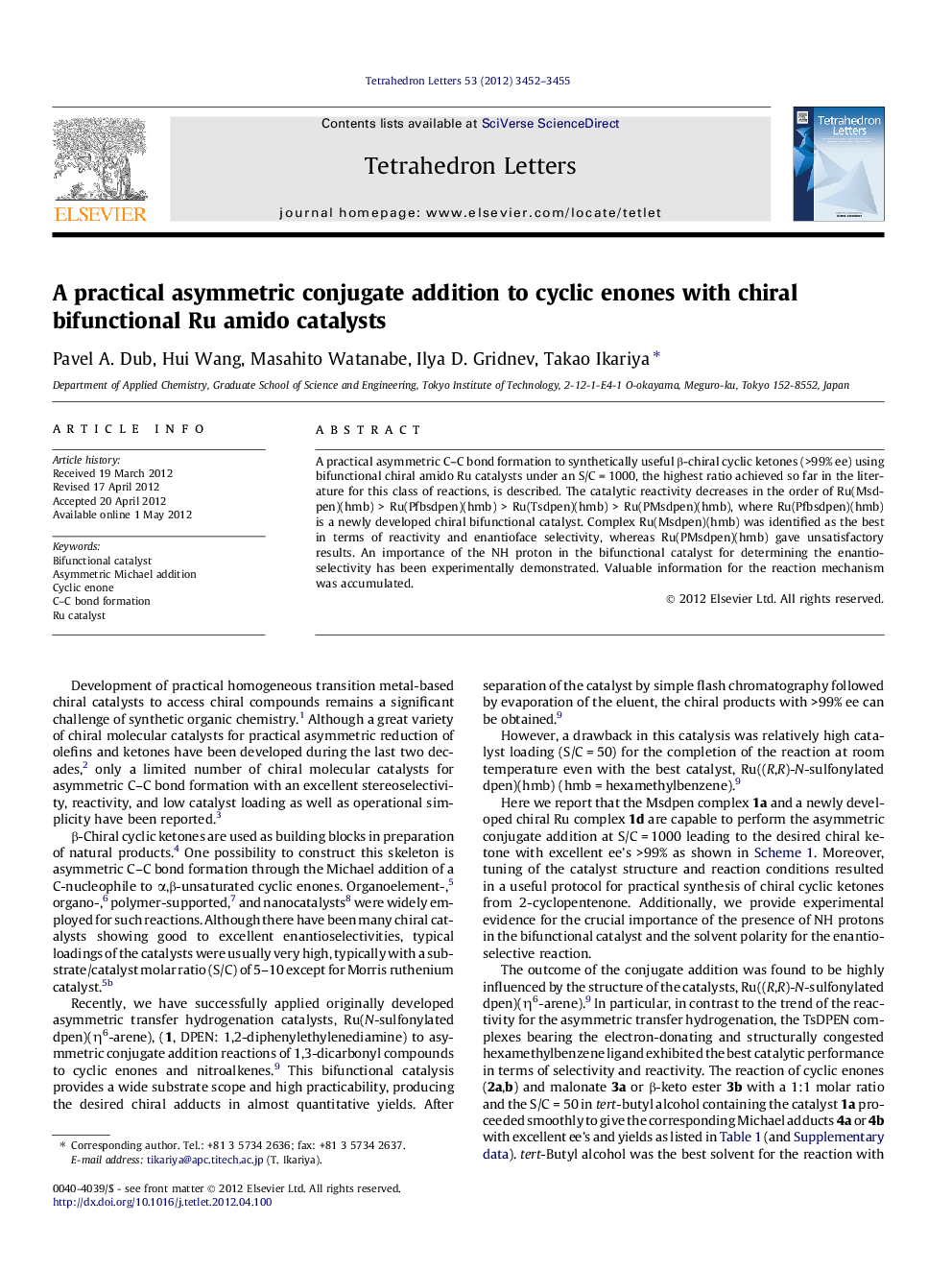| Article ID | Journal | Published Year | Pages | File Type |
|---|---|---|---|---|
| 5266732 | Tetrahedron Letters | 2012 | 4 Pages |
Abstract
A practical asymmetric C-C bond formation to synthetically useful β-chiral cyclic ketones (>99% ee) using bifunctional chiral amido Ru catalysts under an S/C = 1000, the highest ratio achieved so far in the literature for this class of reactions, is described. The catalytic reactivity decreases in the order of Ru(Msdpen)(hmb) > Ru(Pfbsdpen)(hmb) > Ru(Tsdpen)(hmb) > Ru(PMsdpen)(hmb), where Ru(Pfbsdpen)(hmb) is a newly developed chiral bifunctional catalyst. Complex Ru(Msdpen)(hmb) was identified as the best in terms of reactivity and enantioface selectivity, whereas Ru(PMsdpen)(hmb) gave unsatisfactory results. An importance of the NH proton in the bifunctional catalyst for determining the enantioselectivity has been experimentally demonstrated. Valuable information for the reaction mechanism was accumulated.
Related Topics
Physical Sciences and Engineering
Chemistry
Organic Chemistry
Authors
Pavel A. Dub, Hui Wang, Masahito Watanabe, Ilya D. Gridnev, Takao Ikariya,
